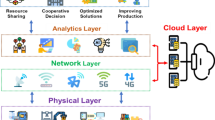Abstract
In order to solve the problem of high leak and error rate in the process of firmware security verification of distance learning terminal, a method of firmware security verification of distance learning terminal based on MD5 algorithm is proposed in order to solve the adaptability problem of existing security verification methods. According to the structure of distance learning terminal, the corresponding structure model is constructed, and the firmware types of distance learning terminal are divided under this model. Collect different types of firmware programs, use MD5 algorithm to verify user identity, detect firmware code security defects and malicious attacks, and identify firmware service daemon. Combined with the verification results of user identity, the final firmware security verification results are obtained through the comparison of attacks and firmware guard strength. Through the test experiment, it is concluded that the average missed acceptance rate and false acceptance rate of the design firmware safety verification method are less than 1%, and are suitable for multiple firmware samples, which proves the safety verification effect and adaptability of the design method.
Access this chapter
Tax calculation will be finalised at checkout
Purchases are for personal use only
Similar content being viewed by others
References
Vijayakumar, K., Arun, C.: Continuous security assessment of cloud based applications using distributed hashing algorithm in SDLC. Clust. Comput. 22(3), 1–12 (2019)
Zhu, X., Li, Q., Chen, Z., et al.: Research on security detection technology for internet of things terminal based on firmware code genes. IEEE Access PP(99), 1–1 (2020)
Chen, C., Ma, J., Qi, T., et al.: Firmware code instrumentation technology for internet of things-based services. World Wide Web 1–14 (2020)
Zandberg, K., Schleiser, K., Acosta, F., et al.: Secure firmware updates for constrained IoT devices using open standards: a reality check. IEEE Access 7, 71907–71920 (2019)
Hernandez, G., Fowze, F., Tang, D.J., et al.: Toward automated firmware analysis in the IoT era. IEEE Secur. Priv. 17(5), 38–46 (2019)
Bauwens, J., Ruckebusch, P., Giannoulis, S., et al.: Over-the-air software updates in the Internet of Things: an overview of key principles. IEEE Commun. Mag. 58(2), 35–41 (2020)
Jabbari, A., Mohasefi, J.B.: Improvement of a user authentication scheme for wireless sensor networks based on Internet of Things security. Wireless Pers. Commun. 8, 1–27 (2020)
Yousuf, O., Mir, R.N.: A survey on the internet of things security: state-of-art, architecture, issues and countermeasures. Inform. Comput. Secur. 27(2), 292–323 (2019)
Gan, Y.X., Chen, X.G.: Trusted client identity authentication simulation for power security control process. Comput. Simul. 38(8), 181–184, 189 (2021)
Lu, X., Pan, Z., Xian, H.: An integrity verification scheme of cloud storage for internet-of-things mobile terminal devices. Comput. Secur. 92(May), 101686.1–101686.8
Shuai, L., Shuai, W., Xinyu, L., et al.: Fuzzy detection aided real-time and robust visual tracking under complex environments. IEEE Trans. Fuzzy Syst. 29(1), 90–102 (2021)
Gao, P., Li, J., Liu, S.: An introduction to key technology in artificial intelligence and big data driven e-learning and e-education. Mob. Netw. Appl. 1–4 (2021)
Liu, S., Wang, S., Liu, X., et al.: Human memory update strategy: a multi-layer template update mechanism for remote visual monitoring. IEEE Trans. Multimedia PP(99), 1 (2021)
Author information
Authors and Affiliations
Corresponding author
Editor information
Editors and Affiliations
Rights and permissions
Copyright information
© 2022 ICST Institute for Computer Sciences, Social Informatics and Telecommunications Engineering
About this paper
Cite this paper
Wang, N., Yu, H., Guo, Z., Lei, H. (2022). Firmware Security Verification Method of Distance Learning Terminal Based on MD5 Algorithm. In: Fu, W., Sun, G. (eds) e-Learning, e-Education, and Online Training. eLEOT 2022. Lecture Notes of the Institute for Computer Sciences, Social Informatics and Telecommunications Engineering, vol 454. Springer, Cham. https://doi.org/10.1007/978-3-031-21164-5_34
Download citation
DOI: https://doi.org/10.1007/978-3-031-21164-5_34
Published:
Publisher Name: Springer, Cham
Print ISBN: 978-3-031-21163-8
Online ISBN: 978-3-031-21164-5
eBook Packages: Computer ScienceComputer Science (R0)




